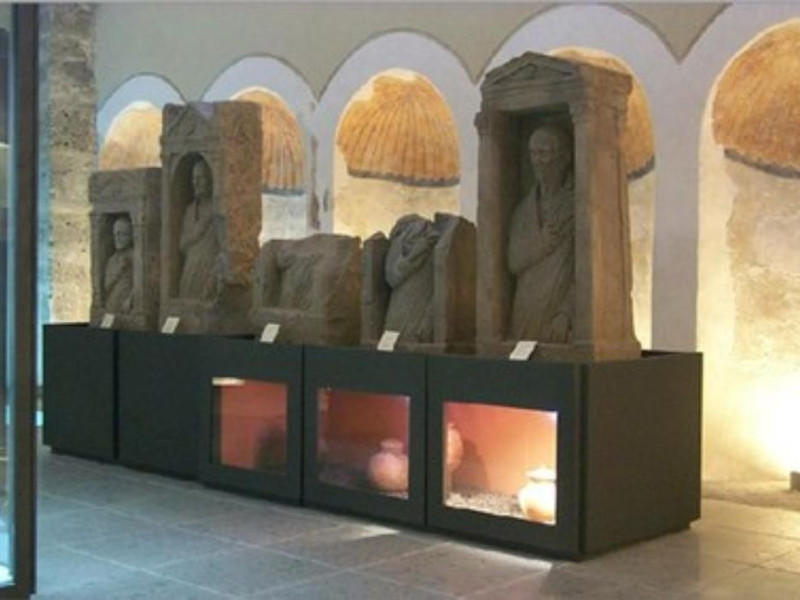Destinazioni - Comune
Teano
Where
Teano (Caserta)
Teano is a town and comune of Campania, Italy, in the province of Caserta, 30 kilometres (19 mi) northwest of that town on the main line to Rome from Naples. It stands at the southeast foot of an extinct volcano, Rocca Monfina.
History
Ancient times and Middle Ages
The ancient Teanum Sidicinum was the capital of the Oscan tribe of the Sidicini, which drove the Aurunci from Roccamonfina. They probably submitted to Rome in 334 BC and their troops were grouped with those of Campania in the Roman army. Thus the garrison of Regium, which in 280 attacked the citizens, consisted of one cohort of Sidicini and two of Campanians. Like Cales, Teanum continued to have the right of coinage, and, like Suessa and Cales, remained faithful to Rome in both the Hannibalic and the Social wars. Its position gave it some military importance, and it was apparently made a colony by Claudius, not by Augustus. Strabo speaks of it as the most important town on the Via Latina, joined by a branch road from Suessa, of which remains still exist, and which continued east to Alife.
In the 4th century Teano became seat of a diocese, and was later an important Lombard county, as part of the Duchy of Benevento. The Benedictines had several property in the city, and here the monks from Montecassino took refuge when their abbey was destroyed in 883. Here one of the first document of vulgare Italian was issued in 963.
"Handshake of Teano"
Teano was the site of the famous meeting of 26 October 1860, between Italian nationalist fighter Giuseppe Garibaldi and Victor Emanuel II, the King of Sardinia. Having wrested the Kingdom of the Two Sicilies from the Neapolitan Bourbons, Garibaldi shook Victor Emanuel's hand and hailed him as King of Italy. Thus, Garibaldi sacrificed republican hopes for the sake of Italian unity under a monarchy. The event is a popular subject for Italian patriotic statues and paintings.
Main sights
Roman remains of Teano include the theatre (2nd century BC, rebuilt in the 2nd century AD), once one of the greatest in Italy with its 85 m of diameter, some extensive baths ("Le Caldarelle"), containing several statues, and some Roman dwellings. A tomb with a Christian mosaic representing the visit of the Three Wise Men to Bethlehem was found in 1907. Of the famous amphitheater, cited by several sources, no traces remain.
Other sights include:
the cathedral, begun around 1050 and completed in 1116, using Corinthian columns obtained from the ruins of the ancient town. It has a basilica plant with a nave and two aisles. After a fire, the church was rebuilt in 1610. The portico preceding the facade houses two sphinxes in red granite, coming from a pre-existing pagan temple. In the interior are a pergamum, with interesting parts from the original of the 12th century, and a 14th-century Crucifix of Giotto's school, while the crypt houses a noteworthy Roman sarcophagus.
the Castle, built by the dukes of Sessa in the 15th century, originating from a 4th-century BC fortress. In the Bourbon era it was used as prison.
the Loggione, built over Roman baths in Gothic style.
the church of S. Peter in Aquariis (14th century), built over a Palaeo-Christian edifice (in turn constructed over a Roman bath, whence the epithet in Aquariis, "on the water"). Recent restoration work has revealed precious Byzantine frescoes depicting St. Agatha, St. Martha, and St. Mark and John the Evangelists. The belfry is a rare example of Byzantine architecture in southern Italy.
the church of St. Benedict, the most ancient holy edifice within the walls, built in the 9th century over a temple dedicated to Ceres. It has 12 granite and marble columns with antique capitals, and once housed precious Benedictine documents which went lost after a fire.
Below the town, on the southeast, is the Palaeo-Christian church of S. Paride ad fontem. It was built over a Roman cisterna, whence the name (fons, fontis being Latin for a fountain or water source). Built originally in the 4th century, the current construction is from the 11th-12th centuries (extensively restored in 1988).
the Franciscan convent of St. Anthony was in built in 1427, according the tradition, by the will of Bernardino da Siena, who also lived here for some years.
Transportation
Teano is 7 kilometres (4 mi) from the gate of Capua of A1 Milan-Naples highway. It can be also reached by road through SS.7 Via Appia and SS.6 Via Casilina. The city is also served by a railway station.
References
This article incorporates text from a publication now in the public domain: Chisholm, Hugh, ed. (1911). Encyclopædia Britannica (11th ed.). Cambridge University Press.

